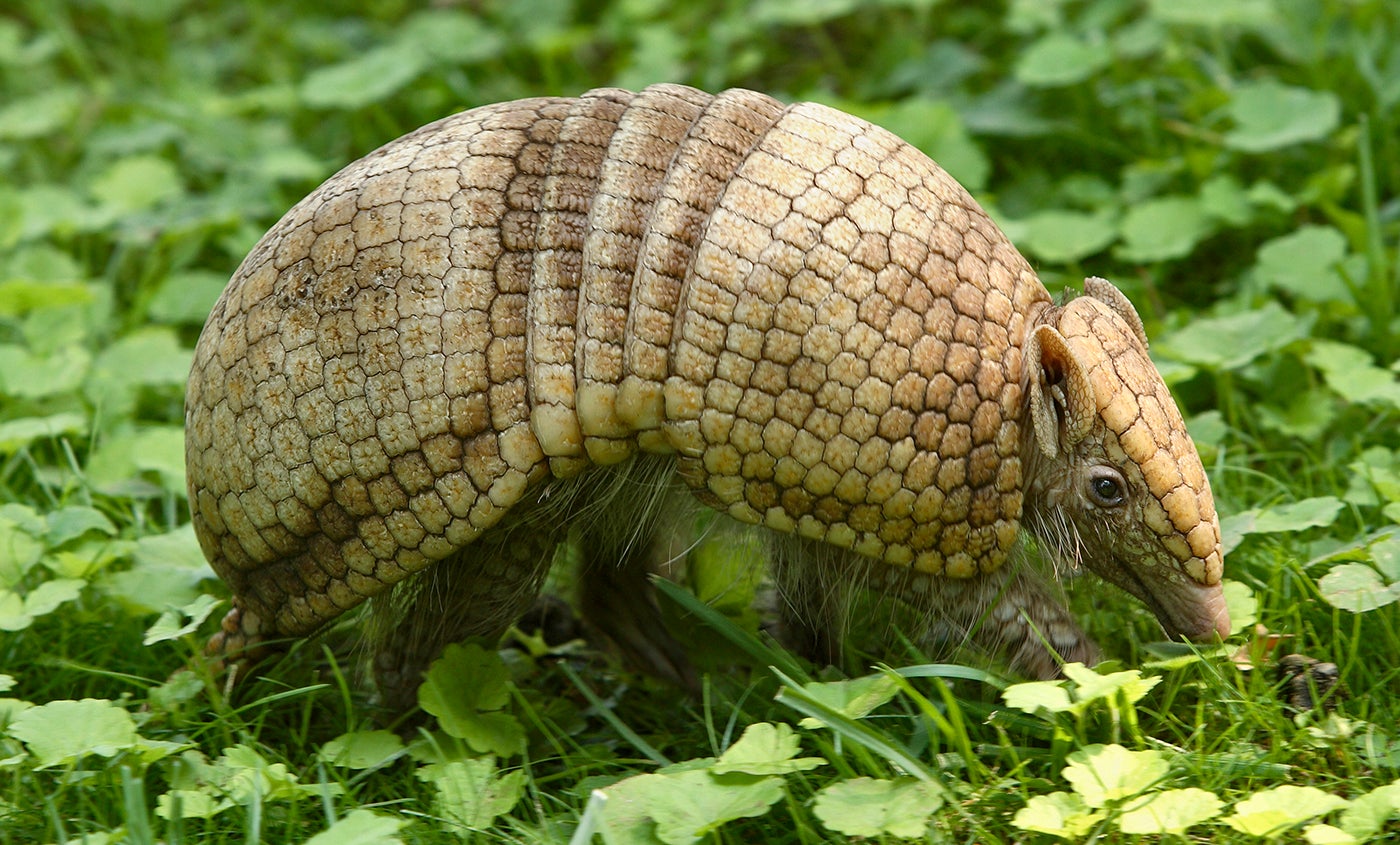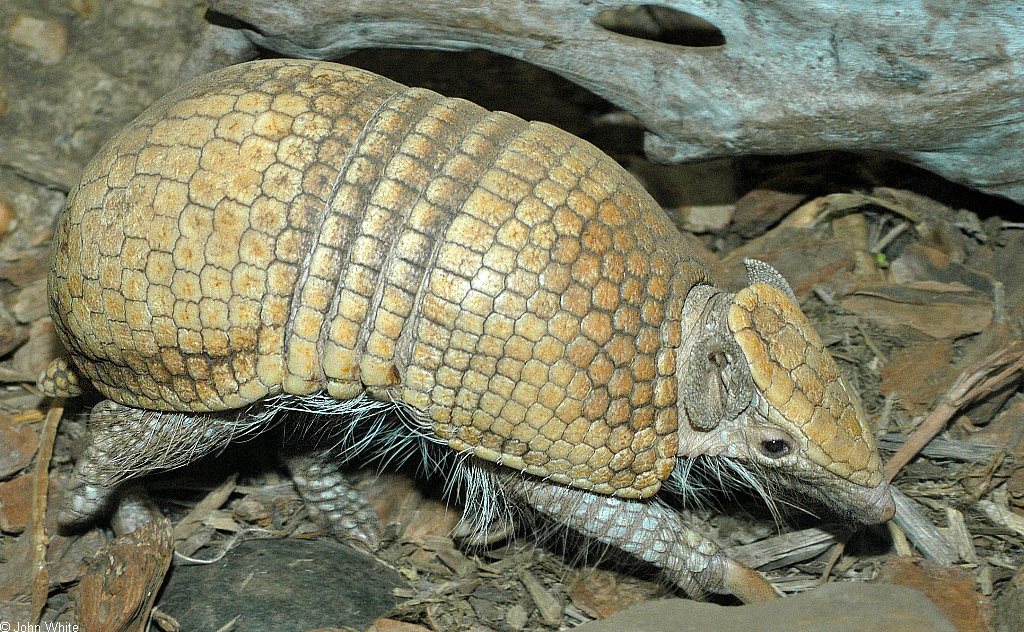

Armadillos have low metabolic rates and low body temperatures to prevent them overheating in closed burrows.

The fairy armadillo feeds mainly on ants and ant larvae. The three-banded armadillo feeds mainly on ants and termites. The six-banded long nosed armadillo feeds mainly on vegetable material but will also consume invertebrates, including ants and termites, and carrion. The nine-banded long nosed armadillo feeds mainly on termites, ants and other insects but will also eat vegetable matter, carrion and the eggs of ground nesting birds. Most armadillos are omnivorous consuming insects, especially ants and termites, tubers and carrion. They are rare, nocturnal creatures and seldom seen. Fairy armadillos live in small holes near ant colonies in dry grasslands and sandy plains, where thorn bushes and cacti grow, in Central Argentina, Paraguay and Boliva. They are covered by a pinkish dorsal shell and dense long fur on their sides and ventral surface. Fairy armadillos are the smallest armadillos. Subfamily Chlamyphorinae – a fairy armadillo, Chlamyphorus truncatus. Subfamily Dasypodinae - a foetus of a nine-banded armadillo, Dasypus novemcinctus, already shows the pattern of the armour that will protect it as an adult, including nine flexible half-rings that give this species its name.Ģ. Subfamily Dasypodinae – a yellow or six-banded armadillo, Euphractus sexcinctus, shows the typical armour, short sturdy legs and long claws of an armadillo.ġ. Different species occur in different regions of the Southern states of the U.S.A., Central and South America. They are nocturnal animals with poor eyesight but a well-developed sense of smell and/hearing. Armadillos are terrestrial and burrowing mammals equipped with muscular fore limbs and hind limbs and large sharp claws for digging in soil to find food and to excavate burrows and nests. In addition, some species protect their hairy, soft under surfaces by withdrawing their legs under their shoulders and hips and sitting tight on the ground other species roll up. This armour protects the animals against predators and spiny vegetation. Three-banded armadillos, genus Tolypeutes, yellow or six-banded armadillos, Euphractus sexcinctus, and nine-banded armadillos, Dasypus novemcinctus, have a number of flexible half rings over the middle and back. genus Tolypeutes, three-banded armadillos.Īrmadillos are recognised by the armour of scutes that covers their shoulders and pelvic regions.genus Euphractus, yellow or six-banded armadillos.Family Dasypodidae Armadillos: 20/21 species in 8 genera.The species is threatened by habitat destruction from conversion of its native Dry Chaco to farmland, and from hunting for food and the pet trade. In captivity, armadillos also eat foods such as fruits and vegetables. The three-banded armadillo has a long, sticky, straw-like pink tongue that allows it to gather up and eat many different species of insects, typically ants and termites. They are among the smaller armadillos, with a head-and-body length of about 22 to 27 cm (8.7 to 10.6 in) and a weight between 1 and 1.6 kg (2.2 and 3.5 lb). Unlike most armadillos, they are not fossorial,but will use abandoned giant anteater burrows. They are typically a yellow or brownish color. The shell covering its body is armored and the outer layer is made out of keratin, the same protein that builds human fingernails.

The three characteristic bands that cover the back of the animal allow it enough flexibility to fit its tail and head together, allowing it to protect its underbelly, limbs, eyes, nose and ears from predators. The southern three-banded armadillo and the other member of the genus Tolypeutes, the Brazilian three-banded armadillo, are the only species of armadillos capable of rolling into a complete ball to defend themselves. The southern three-banded armadillo ( Tolypeutes matacus), also called the La Plata three-banded armadillo, is an armadillo species from South America. It is found in parts of northern Argentina, southwestern Brazil, Paraguay and Bolivia, at elevations from sea level to 770 m (2,530 ft).


 0 kommentar(er)
0 kommentar(er)
